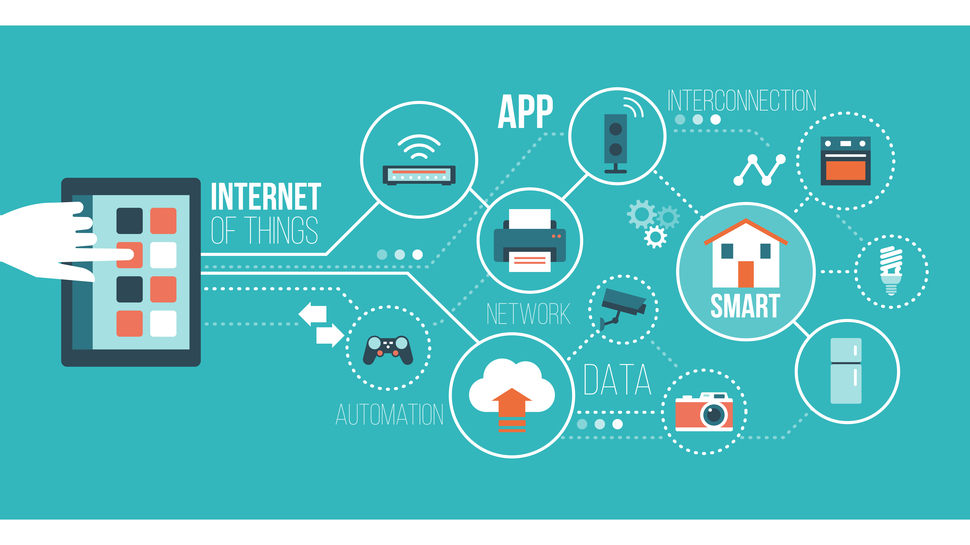Broadband jargon buster - learn the internet lingo before you buy
Do you speak broadband? You will do after reading this

Was your connection speed even to get to this page annoyingly slow? Is the irony of taking ages to get to read articles about the best broadband deals becoming painfully obvious? The last thing you'll want then is more obstacles in the form of broadband jargon.
There's plenty of barely decipherable lingo and jargon on the internet, blurted out by technically minded sorts hurriedly trying to churn out information without thinking about who's reading. We've not all got years of experience talking in code about frankly complex tech that some regulars might find the norm.
You might know your fibre from your router, without getting breakfast cereals and power tools mixed up, but there's plenty of other jargon that needs clarifying.
Here's what you need to know, so you can be savvy enough to get the best broadband for you.
- Got a need for speed? See today's best fibre broadband deals
Download and upload speeds
If you've ever taken our broadband speed test then you'll have seen some chat about your download and upload speeds. As you may already know, the download speed is that coming to you and the upload speed is that going away. But why do you need to know about and consider both?
Many people just look at download speeds and consider that alone. That's fine for streaming a film or downloading a large file. But for things like video streaming or gaming, you need upload bandwidth too. This means a two-way interaction can happen with minimal lag and maximum clarity. So keep that in mind when hunting for your next broadband upgrade.
Fibre, cable and ADSL broadband
You may have heard of a fibre broadband connection as that's now the most popular thanks to its speed and availability. This is the same as cable, essentially. The cable is the way you're getting the wiring and within that cable is the fibre optical line itself.
Fibre optics use light to send signals, rather than electricity along a metal cable. As such there isn't the issue of resistance and you get lightspeed fast data delivery. This is largely future-proof with theoretically no limit to speeds. As the devices at either end of the cables improve so can speeds.
ADSL, or asymmetric digital subscriber line, is an older form that uses those copper lines we mentioned above. These are limited to about 10Mb, which is workable if that's all you have in your area but nothing compared to fibre that's currently offering average speeds of 362Mb from Virgin Media broadband and 300Mb from BT Broadband.
Download limit
Anywhere you see the word limit it's worth paying attention and that's especially true when it comes to getting the best broadband deals. A download limit, as you might imagine, is a cap on the amount of data you can access over a period of time.
Typically this is a limit on data downloaded month to month. While these can save you money on your broadband subscription, they're not ideal if you do lots of online gaming or stream a lot of 4K and HDR Netflix, for example.
FTTC / FTTP / FTTH
These little gems of FTTC, FTTP and FTTH are different ways fibre is transmitted. The first part is Fibre To The... with the last letter being the point at which fibre ends and another connection carries the last of the signal to you. This point is usually where speed bottlenecks so it's worth keeping in mind.
FTTC is to cabinet which means it'll run over fibre to your local street cabinet (those green boxes you often see high-vis coated fellows working on). It then runs to you via cabling, slowing it. This is the most common form of home broadband.
FTTP is to premises which is where the fibre runs right to your home for maximum speeds. FTTH is to home, which is the same thing with another acronym to make it even more complicated, of course.
Mb and Gb
Megabit (Mb) and Gigabit (Gb) are data amounts often seen when talking about broadband as Mbps and Gbps with those last two letters for per second. This deontes how fast you can access the data.
In real world terms, Netflix says you need a 25Mb line in order to steam 4K and HDR content clearly. The fastest fibre lines in limited availability are now 1Gb, so more than enough for most even in the longer term. The fastest more common fibre, at around 300Mb, is also plenty for most homes.
Read more:
- Max out your package with the best broadband and TV deals
- Get prepared for the savings - learn about this year's Amazon Prime Day
- Save your cash by bagging one of these best cheap broadband only deals
Today's best broadband deals
Get daily insight, inspiration and deals in your inbox
Sign up for breaking news, reviews, opinion, top tech deals, and more.
Luke is a freelance writer and editor with over two decades of experience covering tech, science and health. Among many others he writes across Future titles covering health tech, software and apps, VPNs, TV, audio, smart home, antivirus, broadband, smartphones, cars and plenty more. He also likes to climb mountains, swim outside and contort his body into silly positions while breathing as calmly as possible.
